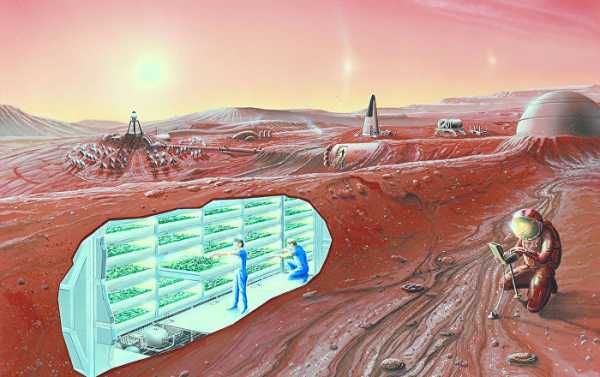
In June, NASA scientists suggested that the best evidence that life once existed on Mars has been revealed in 3-billion-year old organic matter in rocks and cyclical emissions of methane from the Red Planet’s surface, discovered by the Curiosity rover.
In an article for Der Spiegel, German researcher Thorsten Dambeck specifically focused on why people won’t be able to turn Mars into a ‘second Earth’, a question that coincides with the title of his article.
Greenhouse Effect Needed
Dambeck recalled that at present, the average temperature on Mars stands at minus 63 degrees Celsius (minus 81.4 Fahrenheit), even though short-term temperatures above the freezing point of water occur on occasion.
In this vein, Dambeck referred to a new study conducted by a team of scientists led by Bruce Jakosky from the University of Colorado who wondered if it is possible to change the atmospheric shell of Mars in order to prompt a powerful greenhouse effect and warm up the Red Planet.
“The results of the study finally revealed that influencing terraforming of Mars is a mission that will never be achieved because to heat up to the thaw of water ice, air on Mars should contain about 1000 millibars of carbon dioxide,” Dambeck pointed out.
Unlike the Earth, minerals containing carbon dioxide are uncommon on Mars and it is impossible to extract more than 50 millibars of gaseous CO2 from these reserves.
Terraforming is the deliberate modification of a planet’s atmosphere or temperature to make it similar to the environment of Earth and habitable by Earth-like life.
Pouring Cold Water on Musk’s Mars Colonization Plans
Dambeck pointed out that Jakosky’s survey can also, for example, pour cold water on Elon Musk’s ambitiouns plans pertaining to the Red Planet.
“In the next decade, the head of Tesla and SpaceX plans to use state-of-the-art spacecraft to send thousands of colonists to Mars, where they will build a city. According to Musk, one ticket will cost about 200,000 dollars,” Dambeck wrote.
In this context, he added that “Jakosky makes a sober conclusion: even if even more carbon dioxide is detected on Mars, most of the planet’s surface will have to be transformed,” a project which Dambeck claimed cannot be implemented with the help of current technologies.
“Since [US astronomer Carl] Sagan mentioned something similar to this project in 1973, Mars-related data has increased significantly. However, the plan to transform the desert Red Planet with the help of its gas shell still remains the idea of a science fiction novel,” Dambeck concluded.
Sourse: sputniknews.com





